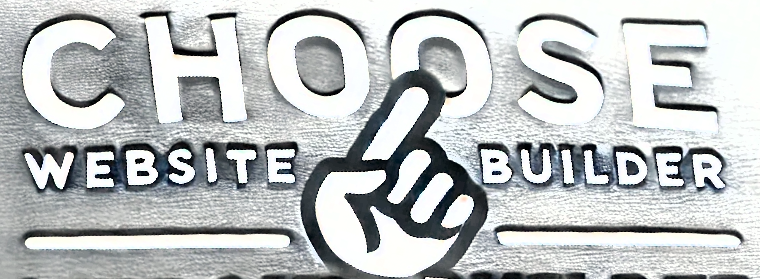
WordPress has been a very popular open source website builder, powering more than 40% of all websites globally. Its open-source nature, vast plugin ecosystem, and ease of use have made it the go-to choice for businesses, bloggers, and developers alike. However, the current turmoil within the WordPress community—ranging from leadership disputes to contentious decisions about the platform’s future—has left many questioning its stability.
For those concerned about these uncertainties, forking WordPress seems like an obvious solution. A fork offers the opportunity to step away from the drama, regain control, and create a stable version of the CMS that prioritizes user needs. Yet, while forking might seem like a quick fix, it raises a critical question: is it time to rewrite WordPress from the ground up instead?
Here’s why the debate over forking versus rewriting reveals deeper challenges within WordPress’s aging codebase.
Why Developers Are Considering a Fork
The WordPress community has faced mounting tension in recent years. Disagreements over the Gutenberg block editor, concerns about centralized decision-making within Automattic (the company behind WordPress), and questions about governance and licensing have created an atmosphere of instability. For businesses that rely on WordPress to power their websites, this turbulence can feel risky and unpredictable.
Forking WordPress offers an escape—a way to distance oneself from the drama while still leveraging the strengths of the platform. By creating an independent version, developers and businesses can take control of the CMS’s future, ensuring stability, security, and alignment with their unique goals. This is particularly attractive for those who depend on WordPress but feel disillusioned by the direction it’s heading.
However, forking WordPress is not without its challenges. It may provide temporary relief from community issues, but it does nothing to address the elephant in the room: WordPress’s outdated and bloated codebase.
The Outdated Codebase: A Hidden Liability
One of WordPress’s greatest strengths—its commitment to backward compatibility—is also one of its biggest weaknesses. Over the years, the platform has prioritized ensuring that older plugins and themes remain functional with new updates. While this approach has helped maintain WordPress’s vast ecosystem, it has also led to a codebase burdened by decades of technical debt.
The result?
- Inefficient Architecture: WordPress’s core is built on older PHP paradigms and coding practices that were state-of-the-art in the mid-2000s but feel clunky and inefficient today. Its reliance on procedural programming rather than modern object-oriented design hampers scalability and maintainability.
- Bloated Code: As new features have been added, old ones have rarely been removed. This commitment to compatibility has created a codebase that’s heavy and unnecessarily complex.
- Security Vulnerabilities: While WordPress has a dedicated security team, the sheer size and complexity of its code make it difficult to address vulnerabilities effectively. The need to preserve legacy features increases the attack surface for potential threats.
- Poor Developer Experience: Many developers find working with WordPress core frustrating due to outdated conventions, a lack of modularity, and inconsistent coding patterns. This can deter skilled developers from contributing to or building upon the platform.
The Case for a Complete Rewrite
Given these challenges, many developers argue that WordPress doesn’t just need to be forked—it needs to be rewritten. A rewrite would provide an opportunity to modernize the platform, eliminate legacy code, and create a CMS that is better equipped to handle the demands of modern web development.
Here’s what a rewritten WordPress could achieve:
- Modern Architecture: Transitioning to object-oriented programming and adopting frameworks or design patterns that align with modern PHP standards would make the codebase cleaner, more modular, and easier to maintain.
- Streamlined Performance: Removing legacy code and focusing on efficiency would result in faster page loads, reduced resource usage, and better scalability for large websites.
- Improved Security: A simpler, more focused codebase would make it easier to identify and patch vulnerabilities, providing better protection for users.
- Better Developer Experience: A modernized WordPress could attract a new wave of developers, offering cleaner APIs, better documentation, and a more intuitive structure for building plugins and themes.
Of course, rewriting WordPress is no small feat. The platform’s success is tied to its vast ecosystem of plugins, themes, and customizations—all of which would need to be re-evaluated or rebuilt for compatibility with a rewritten core. This challenge is monumental, but it could be the only way to address WordPress’s long-standing technical debt and create a more sustainable future for the CMS.
Why Forking Alone Falls Short
Forking WordPress might solve the immediate problem of escaping community drama, but it doesn’t address the underlying issues with the codebase itself. A fork still inherits all of WordPress’s inefficiencies and limitations, leaving developers to maintain a flawed foundation. Over time, the technical debt baked into the code could hinder the fork’s ability to evolve, creating the same scalability and performance challenges faced by the original platform.
Additionally, maintaining a forked version of WordPress requires significant resources. Fork creators must stay on top of security updates, manage compatibility with third-party plugins and themes, and address bugs—all without the benefit of WordPress’s large contributor community. Without a plan to rewrite and modernize the codebase, a fork risks becoming just as unwieldy as the original WordPress.
Stability Through Rebuilding
For developers and businesses seeking stability, forking WordPress may seem like the path of least resistance. But in reality, the platform’s aging codebase means that a true solution lies not in creating another version of WordPress but in reimagining it entirely. A complete rewrite may be a monumental challenge, but it’s also an opportunity to build a CMS that is faster, more secure, and better suited to the needs of modern websites.
Forking WordPress may provide a temporary reprieve from community drama, but for those with the vision and resources to tackle the bigger problem, a rewrite offers the chance to create a platform that’s not only stable but truly innovative.
While forking and rewriting WordPress are two drastic solutions, it’s important to remember there’s a whole world of website builders out there! If the WordPress drama and technical hurdles become too much, consider exploring alternative platforms that might better suit your needs. Whether you prioritize ease of use, a modern codebase, or specific features, there’s likely a website builder that’s a perfect fit. Check out your options and compare features at choosewebsitebuilder.com before making a decision.













